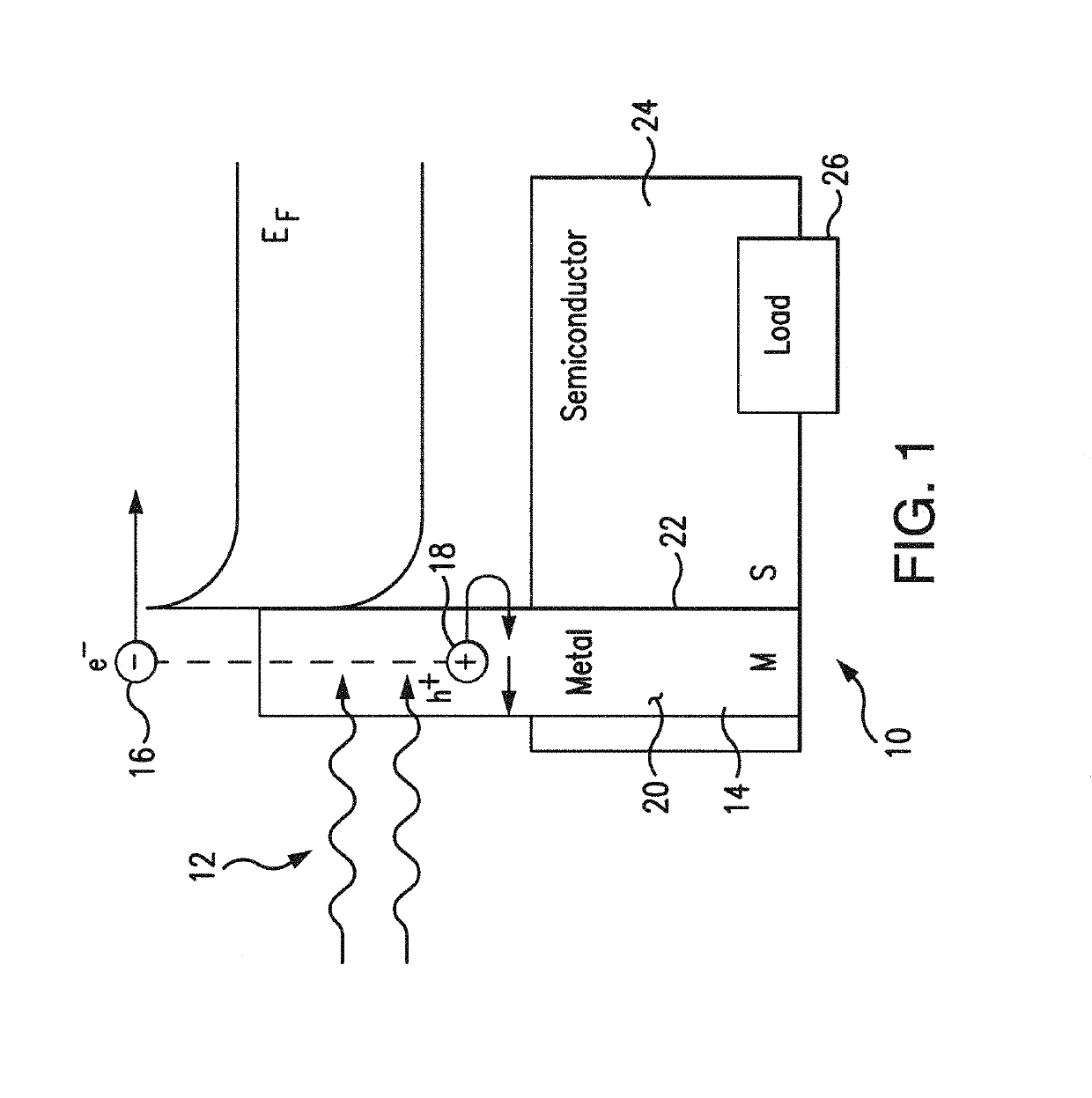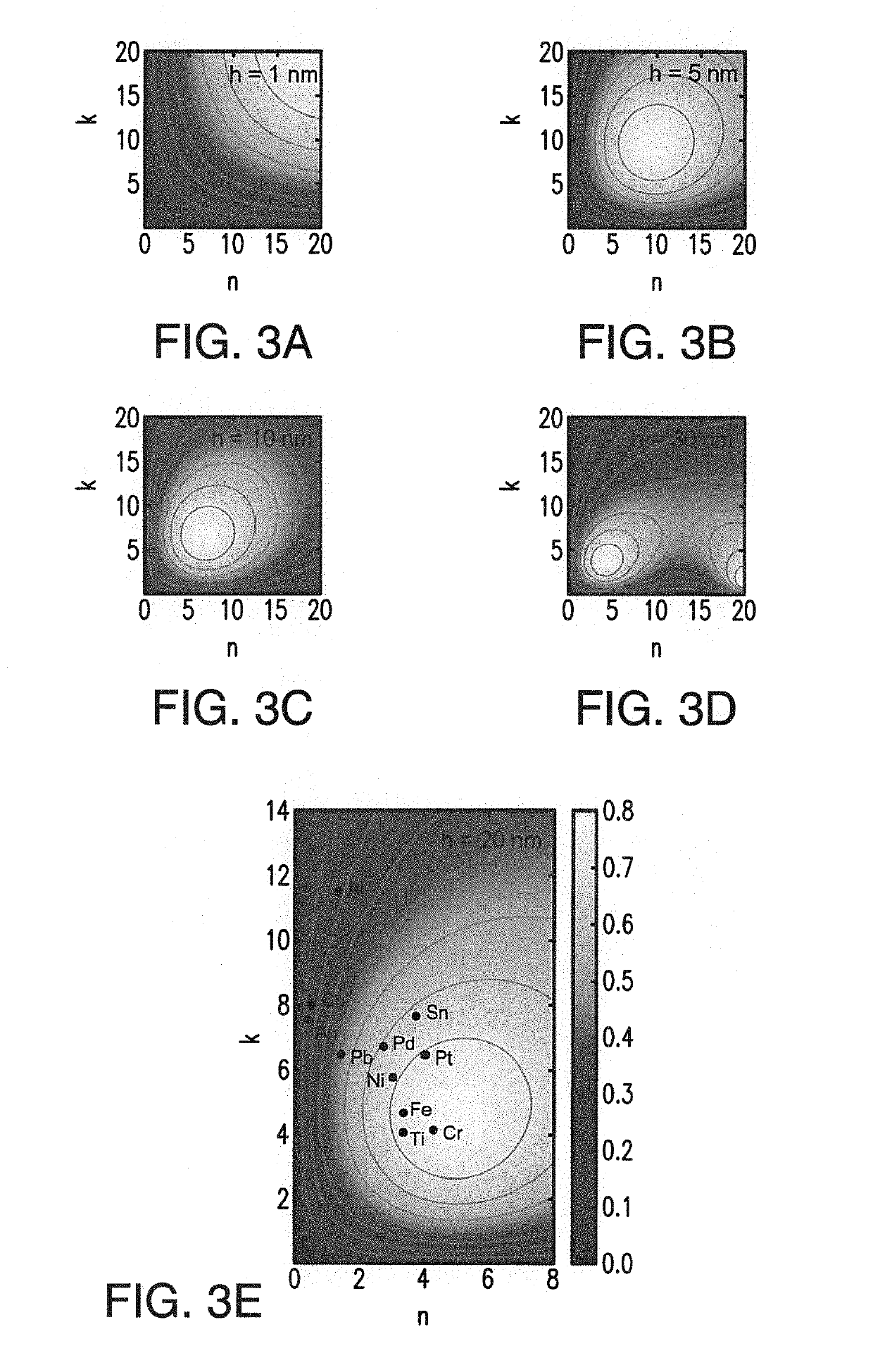Silicon-based photodetectors with expanded bandwidth
- Summary
- Abstract
- Description
- Claims
- Application Information
AI Technical Summary
Benefits of technology
Problems solved by technology
Method used
Image
Examples
Embodiment Construction
)
[0056]Production of metal excited electron-hole pairs which lead to photo generation has been observed in a Metal-Semiconductor hot plasmonic structure 10, shown in FIG. 1, which is based on a Schottky interface with a semiconductor, for example, silicon (Si) when light 12 is incident on a metal film 14 in the Schottky contact. The photon-induced electron emission has been attained across the Schottky junction formed at a metal-semiconductor interface. It is shown that sub-bandgap photons 12 are absorbed in the metal 14 and lead to photogenerated current.
[0057]For absorption of the light 12 in the metal 14, an electron 16 in the Fermi gas absorbs a photon and is excited to a higher energy state. These excited “hot” electrons 16 leave an empty state in the Fermi gas, generating “hot” holes 18. The “hot” carriers 16, 18 travel within the metal 14 and are subjected to scattering that results in the carriers' relaxation and recombination.
[0058]At Infrared (IR) and optical frequencies, ...
PUM
 Login to View More
Login to View More Abstract
Description
Claims
Application Information
 Login to View More
Login to View More - R&D
- Intellectual Property
- Life Sciences
- Materials
- Tech Scout
- Unparalleled Data Quality
- Higher Quality Content
- 60% Fewer Hallucinations
Browse by: Latest US Patents, China's latest patents, Technical Efficacy Thesaurus, Application Domain, Technology Topic, Popular Technical Reports.
© 2025 PatSnap. All rights reserved.Legal|Privacy policy|Modern Slavery Act Transparency Statement|Sitemap|About US| Contact US: help@patsnap.com



